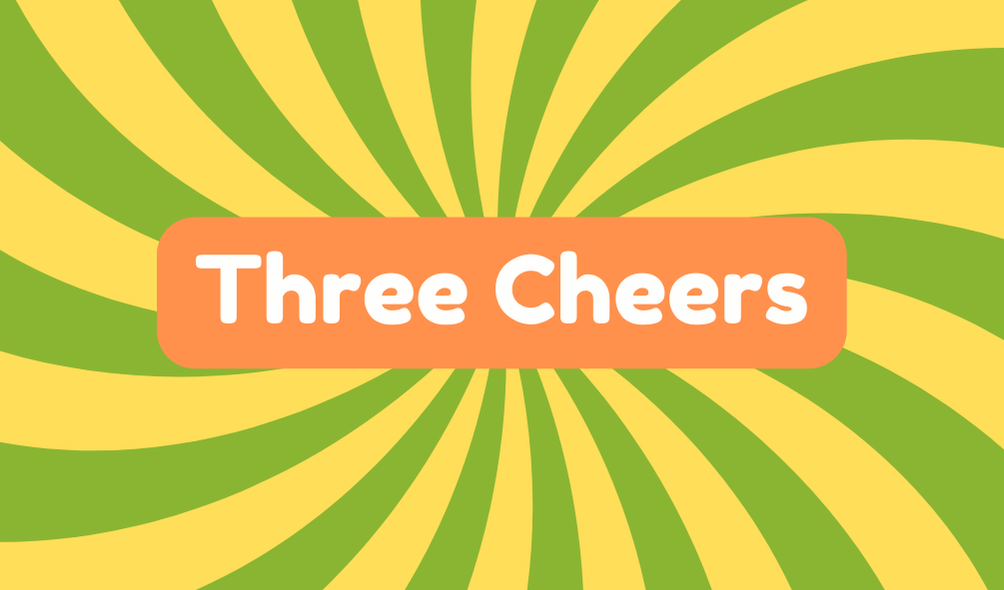"Three cheers" is a phrase that promotes group celebration and enthusiasm, often used to honor someone special or mark a significant moment. Its origins trace back to the French word "chiere," meaning face, and it gained popularity in the 18th century through literature. You might hear it during a sports event or at a family gathering, where everyone raises their voices together. While it's still relevant today, serving as a reminder of communal joy, its meaning can sometimes feel diluted if used too casually. There's much more to uncover about its rich history and usage in various contexts.
Synonyms
When celebrating achievements or special occasions, you might hear words like "cheers" being used interchangeably with several synonyms. These celebratory phrases not only enhance the atmosphere but also convey collective expressions of approval and support. However, it's essential to understand their contexts to use them effectively. Here are three prominent alternatives:
- Hooray – A common shout, often used in sports, which echoes excitement.
- Bravo – A term that shows admiration, often used in cultural settings.
- Well done – A phrase conveying satisfaction with someone's performance.
Each of these phrases serves a purpose and reflects different nuances in celebrating success. Knowing their meanings will help you express appreciation more accurately in various situations.
Example of Sentences
Celebrating with cheers often brings a sense of joy and unity to any gathering. You might notice how these celebration expressions create an uplifting atmosphere, especially in support of teams. Consider these examples:
- Friends cheering "Three cheers for our champion!" at a local sports event.
- Family calling for loud cheers as they toast to new beginnings.
- A school rally where students shout cheers to boost team support.
These moments remind us that, while cheers might seem simple, they hold substantial power in fostering connections and motivating individuals. Now, when you find yourself in a crowd, don't underestimate the importance of those enthusiastic expressions; they can ignite collective energy and reinforce camaraderie. Let your cheers echo!
Origin
Cheers often trace their roots back to the French word "chiere," which translates to head or face. This etymological journey reveals how language transforms meaning over time. In the eighteenth century, cheers became a vibrant expression of gladness, encouraging collective celebration. You'll notice these cultural adaptations reflect a deep-seated human desire to bond and uplift one another during significant moments. The phrase "three cheers" solidified its place in English, primarily through its popularization in literature, like Daniel Defoe's "Captain Singleton." While mostly celebratory, some use it sarcastically, undermining the genuine spirit behind it. Understanding these origins and adaptations invites you to question how words shape our experiences and interactions, pushing you to think critically about language's impact on culture.
Collocations
Collocations related to "cheers" reveal how language intertwines with social interactions, often creating a sense of camaraderie. These phrases emphasize togetherness and celebration, which can be powerful, yet might sometimes feel obligatory or superficial. Here are a few key celebratory phrases you might hear:
- "Raise your glasses for three cheers" – This invites everyone to join in the excitement, enhancing the collective joy.
- "Let's give a round of applause" – Group applause can build momentum, fostering a supportive environment.
- "Cheers to our successes" – Acknowledging achievements can help strengthen connections but may also come off as routine.
These collocations illustrate how language can bind us, but it's important to reflect on their authenticity and impact. Embrace the moment or question its relevance!
How to Use in Everyday Language
Using "cheers" in everyday language can enhance your interactions and convey positive sentiments effectively. You might hear "three cheers for" during celebrations, but it's essential to use it authentically. In everyday usage, employing "cheers" can create an emotional resonance, but be prepared for mixed reactions. Some may see it as a stale expression, while others appreciate the enthusiasm. Incorporate it thoughtfully to commend achievements or boost morale among peers. Remember, it's not just about joining in; it's about fostering genuine connection. Using this phrase might seem simple, but if you overuse or misuse it, you risk losing its impact. Innovate your language thoughtfully, and you'll keep conversations engaging and fresh.
Why Is It Still Relevant Today?
Celebrating achievements and fostering camaraderie remain fundamental in today's fast-paced world, and expressions like "cheers" serve as a quick way to convey those sentiments. You might wonder why this simple phrase still holds weight amid constant change. Cultural traditions and social celebrations often rely on shared expressions to strengthen bonds. "Three cheers" isn't just a relic; it embodies collective joy and recognition. In workplaces, schools, and sports, it elevates morale and builds community. However, as we embrace innovation, it's imperative not to let such expressions become mere formalities. Genuine engagement is essential for these phrases to resonate. So, use "cheers" thoughtfully—it can unite people and celebrate milestones in an increasingly disconnected world.







